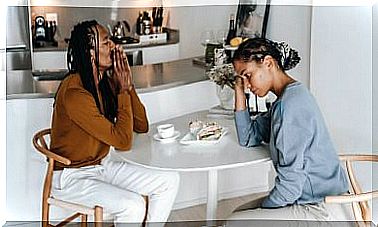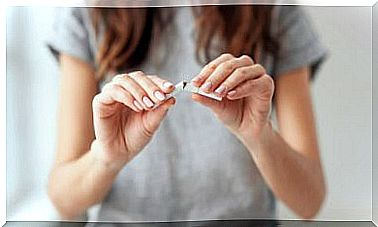How To Prevent A Hypoglycemic Crisis?
A hypoglycemic attack occurs when the blood sugar level is too low, that is, below 65 mg / dl. However, symptoms of hypoglycemia can sometimes occur with blood glucose values above these figures.
A hypoglycemic attack can be caused by having administered an excessive dose of insulin, by having done excessive physical exercise, not having eaten enough or by an episode of vomiting.
When blood glucose (which is the level of sugar in the blood) drops, the body defends itself and secretes hormones that, in addition to raising blood glucose, give rise to symptoms or ‘red flags’ that can vary depending on the person.
Symptoms of a hypoglycemic attack

Symptoms of a hypoglycemic attack vary depending on the phase in which they develop. Initially, the patient may have a feeling of hunger, headache, cold sweats, change of character, tremors or abdominal pain, among others.
If these symptoms remain untreated, some of the following problems may be triggered:
- Difficulty thinking or speaking.
- Strange behaviors.
- Blurry vision.
- Numbness
- Lightheadedness.
In acute attacks, when the drop in blood sugar is very pronounced, it can lead to loss of consciousness, seizures, and even induce coma.
Tips to Prevent a Hypoglycemic Crisis

According to The National Institute of Diabetes and Digestive and Kidney Diseases
Health Information Center, hypoglycemic attacks can be prevented if you take a series of measures that we explain below:
- Plan your meals in advance: including healthy and nutritious food. Also, you shouldn’t skip any meals. Eat three main meals and have a healthy snack in between.
- Always have a fruit or a cereal bar on hand: especially if you are prone to low blood sugar.
- Control your activity level: if you do any sport or do any heavy activity, be careful and do not overdo it too much. It is recommended, especially in these cases, that you always carry a fruit or some sugary entertainment, such as an energy bar.
- Avoid alcohol or caffeine – These drinks can create sudden spikes in blood sugar levels.
- Keep a diary of the moments in which you suffer hypoglycemic attacks: noting the time, so that you can compare them with the food intake and the activity level.
- Get regular exercise and learn to reduce stress: they are necessary to maintain healthy blood sugar levels; Meditation or breath work may also be helpful.
How to act in a hypoglycemic crisis?

It should act differently depending on whether the hypoglycemic crisis has occurred without alteration of consciousness or with alteration of it.
In the first case, and as recommended by the Mayo Clinic, the patient should be given foods with simple carbohydrates, that is, sugars. For example, 2 sugar cubes, a fruit juice, non- diet soda or a glass of skimmed milk.
After 15 minutes, the blood glucose is measured to see if the levels have normalized. In the case in which it has not been normalized, the patient must return to ingest the same foods as before, to provide simple carbohydrates to the body.
If the blood glucose levels have already normalized, it is advisable to give other foods with longer-acting carbohydrates such as:
- Bread.
- Maria cookies.
- A glass of whole milk.
- A piece of fruit.
When the hypoglycemic crisis has occurred with altered consciousness, neither solid nor liquid food can be given to the patient by mouth.
In these cases, a hormone called glucagon must be administered intramuscularly or subcutaneously. What glucagon is going to do is stimulate glucose production in the liver and thus increase blood sugar levels.
To consider
The doctor should be consulted as soon as possible if complications arise or if the patient does not present a significant improvement. Under no circumstances is it recommended to take measures on your own, without discussing it with the professional.









